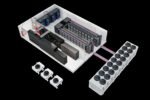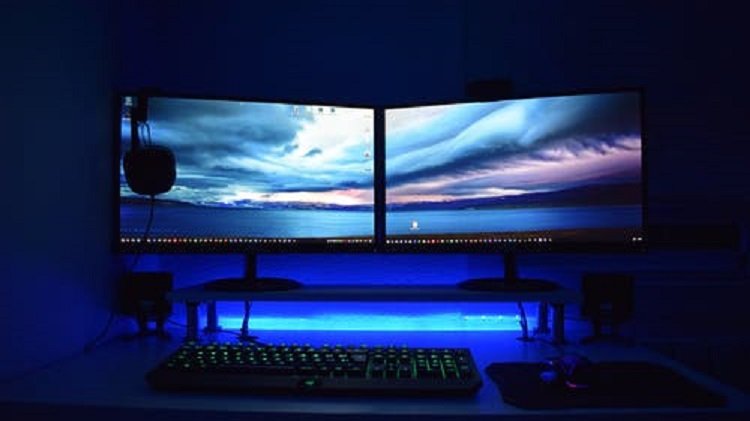When Apple came up with their new innovative product “iPad”, a term was popularised simultaneously, ‘Post-PC era’. With this, many people mistook it to indicate that the PC will die soon and be replaced by tablets and smartphones, but it overcame the challenges and recently witnessed its first significant increase in a decade. Despite component shortages and logistics issues, PC shipments continue to grow in 2021.
The preliminary results from the IDC Worldwide Quarterly Personal Computing Device Tracker, showed that the global shipments of conventional PCs, such as desktops, laptops, and workstations, increased 55.2 per cent YoY in the first quarter of 2021. Agreeing to this figure, early Gartner data shows that the worldwide PC shipments totalled 71.6 million units in the second quarter of 2021, up 4.6 per cent from the second quarter of 2020. While Chromebooks are not included in Gartner’s standard PC market findings, shipments of Chromebooks were once again high in the second quarter of 2021. Year over year, the global PC/Chromebook market rose by more than 10%.
While PCs continue in high demand, the growth rate benefited from shortages in the first quarter of 2020, when the global pandemic began. Lenovo had the largest year-over-year increase of the top six suppliers, at 42.3 per cent. Lenovo, unlike HP and Dell, boosted shipments of desktop PCs, owing to strong demand in China.

The COVID-19 pandemic resulted in enormous demand for personal computing devices as individuals all over the world adapted to the comfort of their own homes. Since adults were stranded at home and children turned to remote schooling, the demand for laptops surged. This demand was the major driver of the global PC market’s expansion. “The major growth driver is PC demands triggered by the pandemic. Consumers continued to buy PCs for various reasons such as entertainment, communication, and education while schools and businesses also buy PCs for remote work and online education,” said Mikako Kitagawa, an analyst at tech. quantitative innovation, Gartner.
There are majorly four trends for this growth in the PC market presently. Two of them being remote working and remote learning as discussed earlier. ‘Device as a service’ and ‘emerging use cases’ are the other 2 factors that played a major role in this elevation.
The device as a service (DaaS) enabled organizations to install PCs for a fixed monthly fee rather than paying the whole purchase price upfront. This help to keep capex low and operational expenditures predictable. DaaS also offer the added benefit of lowering IT overheads for provisioning, after-sales servicing, and product disposal, all of which are controlled by the vendor. This came in as a good opportunity for many business owners who were looking into cost-cutting due to the recession caused by the pandemic.

“COVID-19 has changed a lot of things since 2020, including the market and consumer behaviour. Under NEW Normal, the digital platform becomes much more important than ever before, no matter whether you are marketing communication or sales person, people are getting used to spend more of their time in the digital world now,” said Seemant Prakash, Senior Channel Sales Manager, NEXSTGO.
Middle East was one of the top leaders in PC usage. According to reports, Middle East & Africa’s personal computing devices market posted strongest annual growth rate for 15 years. The personal computing devices (PCD) market in the Middle East and Africa (MEA) grew by 36.6 percent year over year in the first quarter of 2021, the fastest yearly increase in the area since Q1 2006. The report places Lenovo in second place in the Middle East & Africa PC Market Vendor Shares chart.

General Manager at Lenovo Gulf, Mohammed Hilili, commented “Similar to our global success story, we are also experiencing sustained growth locally. IDC’s latest figures for the Gulf region show that Lenovo has achieved 26.3% traditional PC shipment market share – the highest of any manufacturer. We have witnessed firsthand the ways in which demand for PCs has grown exponentially over the past year, and while many have made investments, there are still ongoing requirements for reliable and more portable devices which can aid the new, long-term agenda of working, learning and keeping entertained from anywhere.”
Due to the maturity of the markets and the increasing population of tech-savvy customers wanting to invest in luxury PCs, there is a big growth witnessed in countries like the UAE and Saudi Arabia. Gaming, in particular, is exploding in popularity in this part of the world. According to IDC, during Q3 2020, gaming displays accounted for 33.8 percent of all consumer shipments, with a total value of $46.3 million.

“We have seen great demand in the gaming laptop, monitor and commercial business especially. We have, like all vendors, been struggling with component shortages and logistics challenges. However, these are improving, and I expect supply to meet demand in Q2 of 2022,” said Paul Collins, General Manager, Acer Middle East and Africa.
Channel partners play a key role in this increase in PC market. Because of the increased focus on digital, companies are now building up their partner collaborations. For example, Lenovo said that across EMEA, over 90% of their total sales were conducted through channel partners, the highest indirect shares among their peers.
Vendors are also acknowledging the role of channel partners in reaching the customers re giving a boost. Collins elaborates on how they support their partners, “Margins have improved for all channel partners with prices rising as much as 35% on some products. This has shown that there is still much price elasticity in the PC market. We have strong channel programs offering rebates, extended terms, DaaS, and the Acer reliability promise which further enhance the richness of our Acer offering.”
“We are experiencing the strongest growth currently are UAE, KSA and Egypt. We have been focusing on developing a two-tier business model, for example with the recent signing of PC DealNet as authorized distributor in the UAE, Qatar, Bahrain, Oman, Lebanon and Jordan, and also looking to grow our second tier reseller base,” said Alexander Malienko, Business Unit Director – Middle East & Africa, Dynabook Europe GmbH. “With such developments, we will have focused and dedicated teams in building the channel for Dynabook in key markets, strengthening our exposure in important sectors such as education, healthcare, manufacturing, energy (oil and gas) and SME, to name a few.”

Dynbook claims that by providing the right products at the right time, they are enabling the channel to rise up to meet the current demands of businesses. Malienko further explains that “Dynabook has always been dedicated to providing the B2B sector with a device optimised for every level of requirement, and the channel is surely reaping the benefits of this, carrying products that have each been carefully engineered to address the security and manageability challenges posed by the accelerated shift towards flexible working patterns in the last 18 months.”
While manufacturing interruptions caused by Chinese lockdowns were a source of worry in Q1 2020, and CPU and panel shortages continue to hamper supply currently, studies show that despite a global semiconductor shortage, the PC market is expected to grow in 2021. Prior to 2020, the industry was experiencing CPU shortages, as well as restricted memory and panel availability. The emphasis is now on lower-cost components such as laptop panel driver ICs, audio codecs, sensors, and power management ICs (PMICs).
Though there are shortages, the PC market has found a middle ground to grow. While IDC predicts a slight drop in PC growth in 2022 (-2.9%), the overall five-year compound annual growth rate (CAGR) remains favourable. Though many expected PC to die out by this time, we are witnessing a re-birth of PC.











